This week on the Truth for Teachers podcast: My guest will talk about the personalized learning model their school follows, specifically the flexible learning spaces and schedules.
If you’re a regular listener of Truth for Teachers, you know I like to focus on very practical, actionable strategies that every person listening can implement. Today’s episode is going to be a slight departure from that.
This episode is a chance to dream, to imagine new possibilities, to rethink everything about the way your school day is structured. I’m going to be talking with a principal whose team had a vision for a really innovative way to support kids in personalized learning and project based learning, and have her tell the story of what that dream looks like now that they’ve made it a reality for 500 kids.
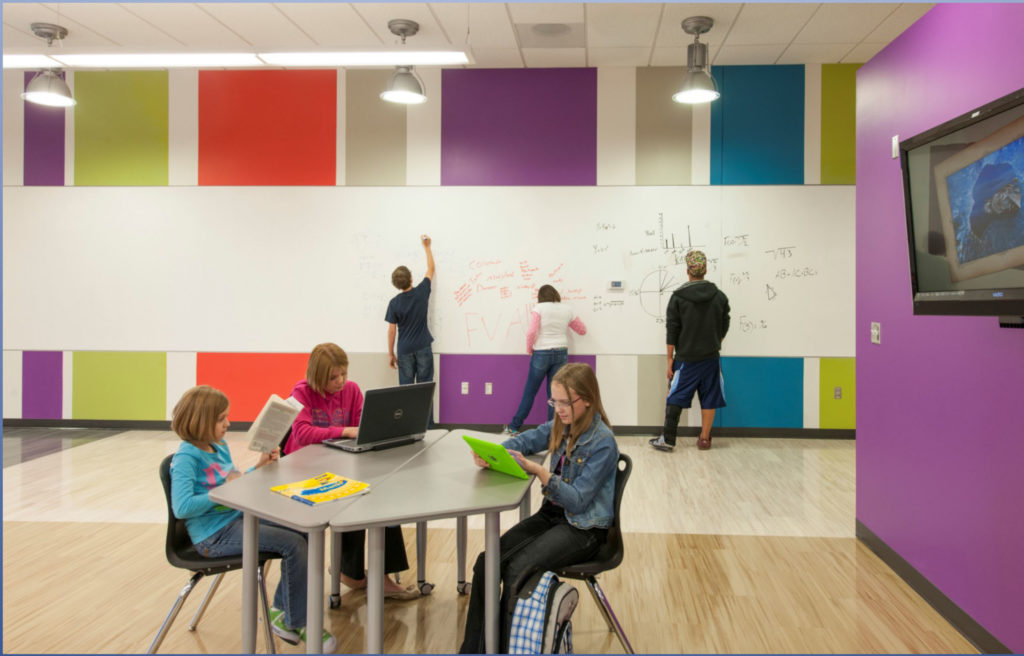
In the interview that follows, I’ll be talking with Jodi Fletcher. She has more than 25 years of experience in education and is currently serving as the principal of Springs Studio for Academic Excellence in Colorado Springs, Colorado.
SSAE was founded in 2010 and serves K–12 students in one of the fastest growing districts in the state. SSAE combines online, blended, and project-based learning. It evolved from a virtual school to a mix of online and on-campus, where students and teachers have created an innovative learning space and schedule.
Want to listen instead of read?
Listen to season 5 episode 8 below,
or subscribe in your podcast app.
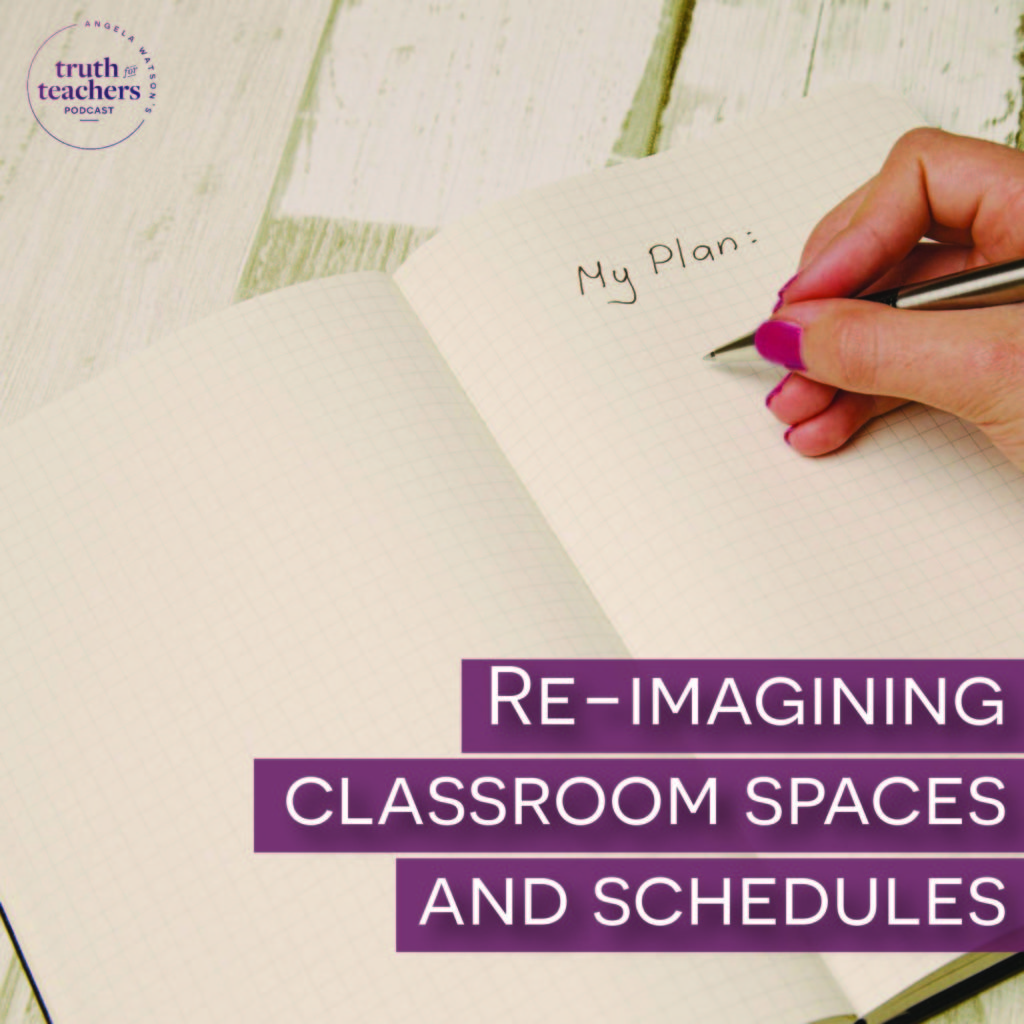
Jodi, I want to start with the why. When SSAE was created, you were the assistant principal. Tell me about the vision that you all had as the administration, and why you chose to completely reimagine the way students would learn.
This question really should be answered in multiple ways. First and foremost, we opened seven years ago as Falcon Virtual Academy. The reason we opened was really and truly to recoup and recapture district enrollments that were leaving District 49 for the big, statewide virtual schools that were popping up. And so with that said, as administrators, we hoped to really help the district recoup financially and bring back students that lived in our district first and foremost.
As we became a viable school in our first year in 2010 as Falcon Virtual Academy, what we quickly realized was that for kids who were separated from the educational environment in a full virtual manner, there was no contact, there was no communication, there was no relational capacity. What we started then doing is bringing kids in on a one-day-a-week basis to get small group instruction or tutoring, do science labs, or work with their teachers. What we quickly realized was the kids that were coming in one day a week, or a couple hours during that week, whatever it might have been, were outperforming the kids who were full virtual exponentially. And so as we built this model for Year One, we very quickly realized that we needed to move into a blended model. We really replicated what a big virtual school was doing, found that it didn’t work, and quickly made some adjustments. With that said, we understood that the blended model would have to be what we did.
We were in a small space and really made blended the pinnacle for Year Two. Blended looked like project-based, experiential hands-on learning. That was the crutch, to really get kids to come into the building. We did a humanities unit that was called the Wild, Wild West where kids explored the Wild West for an entire semester, and they became characters, dressed up, and culminated with this amazing Wild West festival. They invited people from the community who have historical knowledge to come in, and things like that, and that was really the “carrot” that brought the kids into the building. And while we had them in the building working on the Wild West Fest, we quickly found out that, hey, we can embed super standards into these classes that covered all the content areas. And so they were getting a double bang for their buck academically and building that social relational capacity with their peers and with the staff.
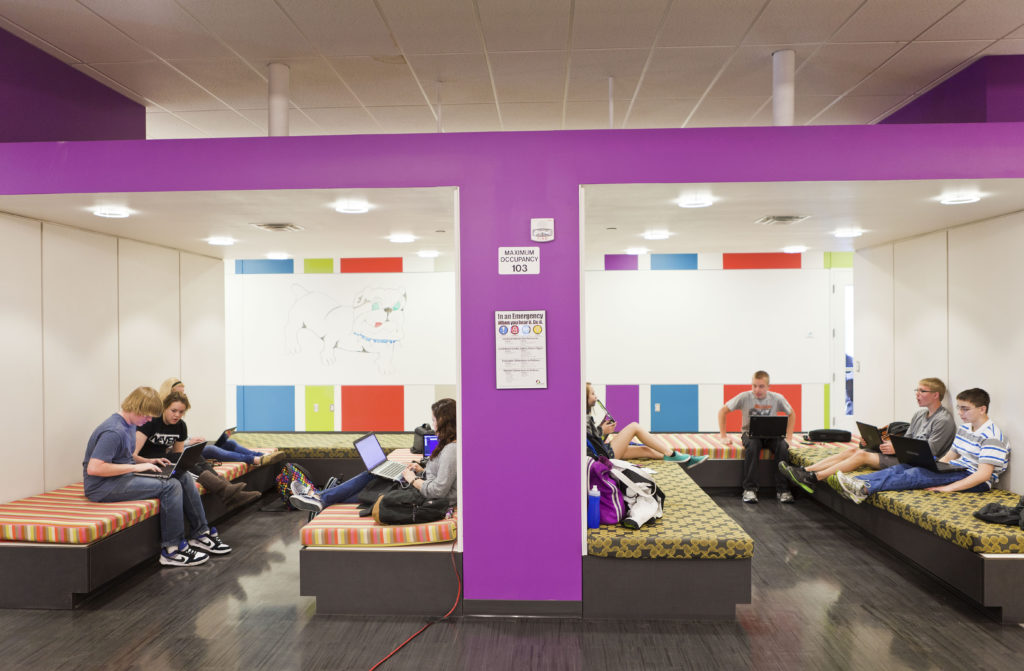
I love that so much of what you were doing was really based on just observing the students and figuring out what was working for them and what wasn’t and being responsive to that.
Absolutely. One of the mantras that we’ve had here since day one is we’re building the plane as we fly it, but we can very quickly try something. If it’s successful, great. If it’s fail, fail fast and fix it. And so we gave our teachers a lot of freedom and flexibility to do what they felt was in the best interest of the student body and the population that we were attracting.
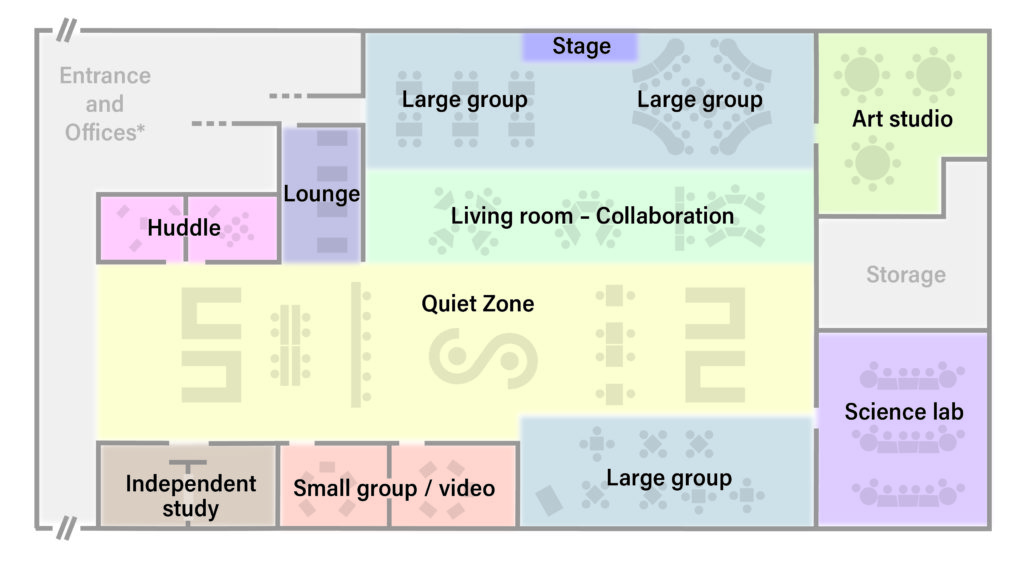
We know that personalized and project-based learning can be accomplished in a more traditional setting, but as you were planning, you quickly began to realize that a different type of physical layout would be conducive to the types of instruction you were envisioning. You took what was basically a single story warehouse building and created different areas for learning. It’s really just so cool to see! I’d like to know how you chose the design for the learning spaces, and have you describe those different areas of the school and what kind of learning takes place in each one.
Absolutely, and I can’t take credit for the design and layout. We had amazing architects. Our then-zone superintendent Kim McClellan and our original principal Dave Knoche really were the brains behind the design, the layout…. You’ll see it in any articles you ever read about our school or anybody ever talking about our school. It was founded on “Google-meets-Starbucks.” That’s the vibe, and that’s the feel that we wanted for our kids. We didn’t want traditional rows and things to really look like classrooms, and we don’t have that.
When the building was originally designed, we had this quiet space in the middle. It was kind of called the living room, and then we had little break-out areas for whoever wanted to teach in them. The beauty of our building is that teachers have gravitated to one section, over the years, and now the really cool part is that they’re actually trying other people’s space, and they’re saying, “Oh, I really like teaching here.” So it’s about freedom and flexibility of movement.
We have a traditional art studio in the building, and we have a traditionally rated science lab. But other than that, nothing is traditional. We’ve got glassed-in rooms for kids who need small breakouts. We’ve got a room that’s a little bit more private so our special education students can work with their case manager on social skills and things like that. But it absolutely doesn’t replicate a classroom.
As you said, yes, project-based learning can be done anywhere, but how nice is it to have, you know, 2,000 square feet of just open space where kids can all work collaboratively together and move tables and move chairs or have nothing, sit on the floor, move a couch, whatever it might be. So it’s all about freedom and flexibility and learning spaces and movable furniture, open concept.
I taught in a school many, many years ago in Prince George’s County, Maryland. It was a school with no walls, and I was a music teacher, and I traveled on a cart. Yeah, that didn’t work so well. The other teachers did not love that. They did not love me making all of that noise, but hey, I was just doing my job in the layout that I was given. So our staff has to really buy into this open concept.
It’s never quiet in our building. There’s going to always be a level of noise and excitement and exposure and things like that. And you can’t be afraid for yourself to be opened up, because that’s what you’re teaching, and it is an open environment where everybody sees what you’re doing, so it really does increase teacher accountability as well.
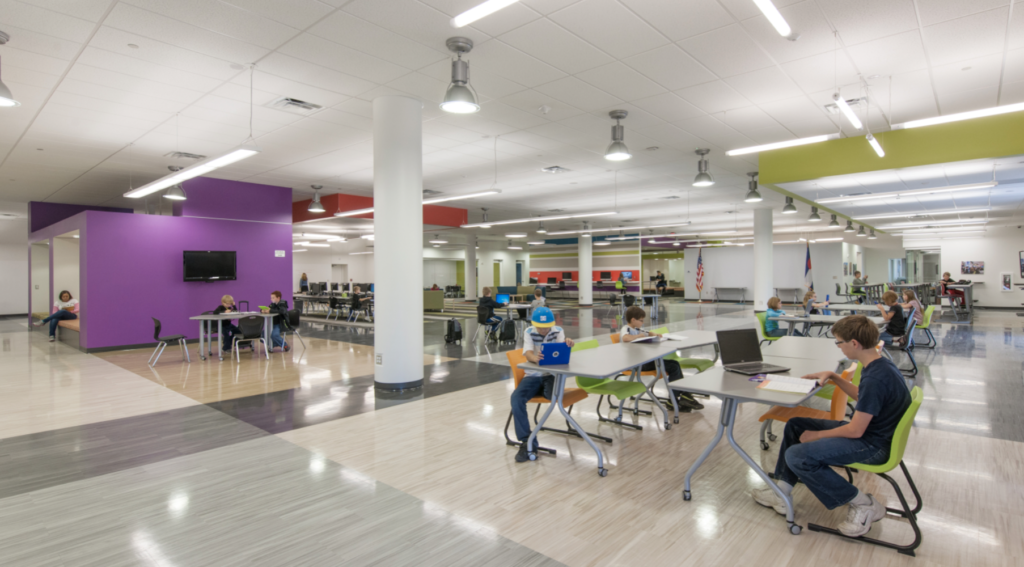
What does that look like on a daily basis? When the kids come in, is there a certain area that they know to go to first?
This building that we’re in currently is only now being used for our sixth through 12th-graders. We actually moved our K-5 program out this year into a little bit more of a traditional environment, because we didn’t have enough time and space for them to be in the building with 6-12. At the middle school level, everybody has kind of their area. There’s the English area, there’s the social studies area. Obviously science is in the lab, and then there’s the math area, the art room, those kinds of things.
But at high school, it’s become very fluid this year and it’s kind of fun. Art and science obviously are where they are, but our math teachers teach in really four different spots during the day. My English teacher has just decided that she wanted to shake it up a little bit and she switched with one of our teachers. We put this schedule on the wall mounts.
We just started our second trimester at high school. Today is our first day. So we put the schedule on the wall with each block of the day, which teacher and where they’re going to be so our kids can know where they’re supposed to be each time, because we are trying to shake it up a little bit to make the kids a little less stuck in their ways.
Is there non-traditional seating as well? Do you have stand-up desks or anything like that?
We absolutely do. We have tall tables with high stools. We have tall tables where you can just stand and lean. We’ve got lots of couches, convertible couches that are all over the building. We have tables and chairs, but really no desks. We’ve got stools, we’ve got soft ottoman-type seating. You name it, we’ve got it. It’s pretty flexible.
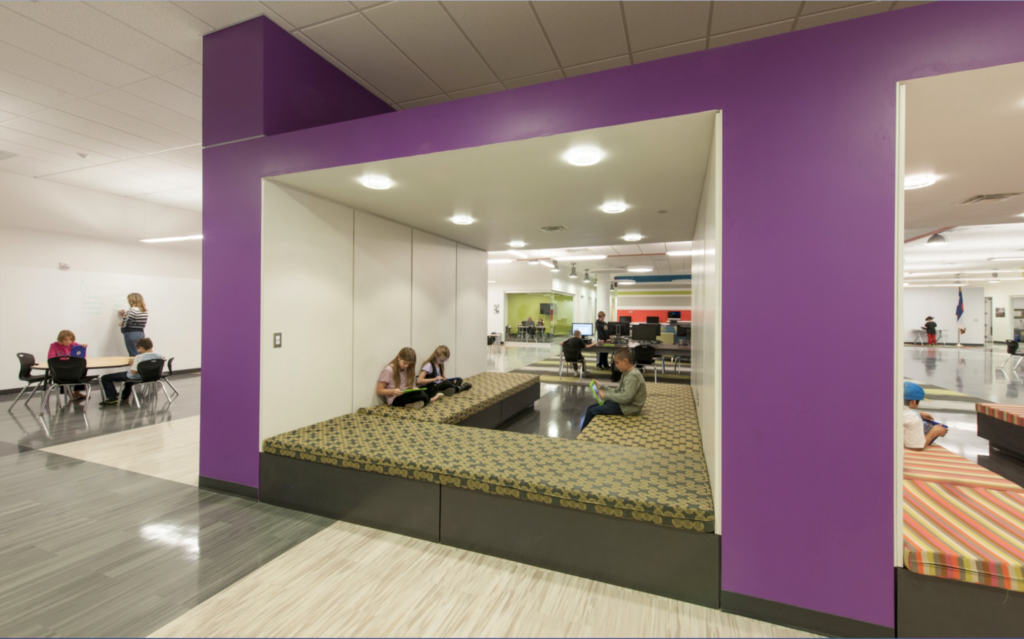
Are the students allowed total choice about whether they’re sitting or standing or that sort of thing? And how does that affect the management piece for teachers? Have they found that to be challenging?
They really don’t. Most of the teachers are very adaptable, and the kids! I have certain areas where kids can sit on the floor. You know, we have these little things called Back Jacks that they can just sit on the floor or they can lay on the floor. I had a student who graduated two years ago, we have these little cubby areas where kids can just go and relax and do their work in the cubbies if they don’t need to be working with the teacher. And I never saw this kid, for a year and a half, sitting in a cubby. He would always be laying in the cubby on the soft cushion with his feet up in the air against the wall with his computer over his head, and that’s how he did school.
And it doesn’t matter. That’s where he was comfortable, that’s what he enjoyed. He was productive. He was engaged. He was on task. He was being academically successful. He wasn’t disrupting anybody, so what’s the difference?
That’s a mindset shift from a traditional classroom, big time. You have to be flexible. Kids don’t just come and sit in rows. We do have kids who stand in the back of the classroom. We have kids who sit on the floor. We have kids that are on the couches. They pull up a chair. It’s however they are comfortable. And really, we mimic that with our teachers too. We don’t want our teachers standing up and lecturing. It needs to be engaging.
So the physical space is obviously very flexible in the school, but I think that one of the most interesting and innovative things your school is doing making TIME flexible, too. You’ve found a very innovative way to optimize your school’s resources to support 500 students in a building that would only be able to accommodate 300 if they were all there at the same time. How does the blended learning schedule work at SSAE?
Absolutely. Because we are, by statute, a virtual school, attendance in our school isn’t mandatory. It is our job to make it engaging enough for kids to want to come in and be in school. So what we’ve done is created a two-day-a-week model for all of our grade levels.
On Mondays and Wednesdays our sixth through eighth-graders are in the building. We kind of run a block schedule through the whole day, and it’s like a traditional school. It’s about 8:30 a.m. to 3 p.m., and they have different classes and study studios and opportunities to work with their teachers and recess and all that fun stuff.
Same thing with high school. They’re in the building on Tuesdays and Thursdays. We run schedules so that they can meet with all their classes and teachers. If they need the support, and in high school it’s a little bit more flexible than middle school because high schoolers can make more mature decisions, we hope, usually.
And the nice thing is that if they need to go to their classes, they go to their classes. If they don’t feel they need to go to their classes, they don’t. The only time we ever mandate kids come in the building is if they are failing, because our job is to educate them and not to allow them to be at home and hide, and that happens so often in big virtual schools.
So Mondays and Wednesdays are middle school. Tuesdays and Thursdays are high school, and then Friday used to be our only day in-building with our K-5 kiddos here at the Constitution Campus. What we found is it was more of an enrichment day and fun, but those kids really need more structured academics. They need more teacher support.
So we moved them over to our original building that we started, and which is much more traditional, it’s called the Mohawk Ranch. They’re in-building Wednesdays and Fridays, and they run of a more academically structured day. The cool part is that then we opened up Fridays for sixth through 12th-grade students to come for intervention, small group instruction, tutoring, and to get any kind of support that they need from their teachers, work on group projects, whatever it is that they need to do. It provided now a third day for sixth through 12th graders to come in and get additional support.
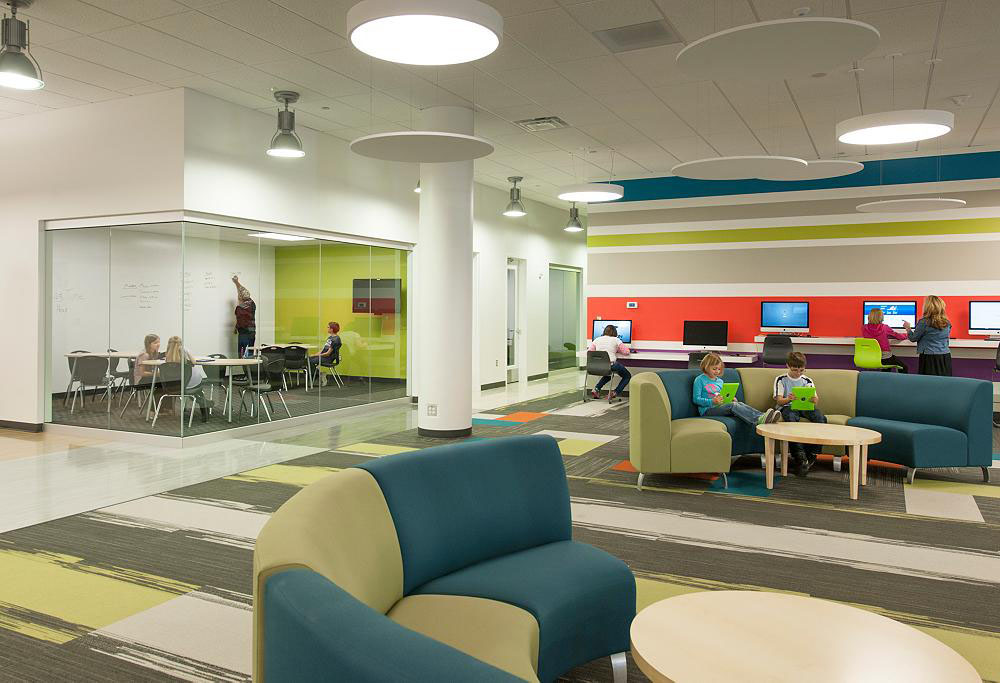
What’s something that you wish every single teacher listening knew about setting up flexible spaces and schedules for personalized learning?
I think first and foremost is not to be confined by the constraints of a traditional classroom. You can break your classroom up into different areas, get rid of rows, understand that it may not always be quiet, and really set things up differently. Bring in non-traditional classroom furnishings.
When you’re making scheduling for students, think about what they want to do, what they need, what their objectives and their goals are. Group work is huge, so make sure you have areas where kids can work collaboratively. I think the old “sit and get days” are over, at least I hope they are. They’re over at Springs Studio, I can tell you that. But it needs to really reflect what our kids like and enjoy.
We do a lot of game-based learning here. Minecraft is a big deal. Our kids love it, and they can do such amazing things with it. And so really utilizing not just untraditional furnishings and mindset, but using different tools and technology I think is something that people really need to look at.
Think outside the box. If you need straight rows and desks and chairs, it’s not going to work. But if you can rearrange your classroom, and you have some freedom and flexibility to bring in a couch or some ottomans or some big giant bean bags, things like that, it’s meeting kids where they’re at. They want to be comfortable.
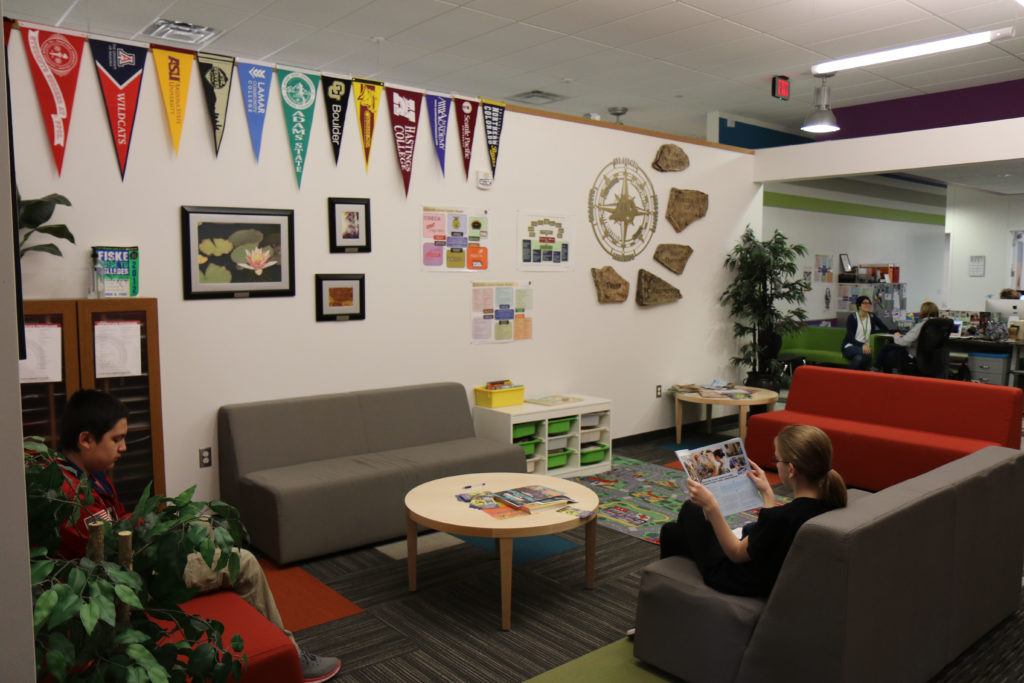
I always close out the podcast with something that I call The Takeaway Truth–a short but powerful sentence or quote that I want teachers to remember in the week ahead. Can you give us a Takeaway Truth for this week?
I think what I would say about our world is that we have committed, as a staff, kindergarten through 12th-grade, regardless of the teacher, that nurturing is the key. And so what we always say is relational capacity trumps all in our school. And we truly and genuinely believe that we cannot capture their minds until we capture their hearts.
We cannot capture students' minds until we capture their hearts. -Jodi Fletcher Click To TweetSo there you have it–I hope this interview with Jodi has given you some inspiration if you’d like to teach in a school like this, and some starting places for moving your school in this direction. I also hope you’ve gotten some inspiration on how to start right within your classroom with personalizing student learning.
Jodi’s made it very clear: The steps you take don’t have to be dramatic. Start slowly with giving kids more choice and making the learning environment more about them, and build over time.
This episode is sponsored by TheTeacherToolkit.com, a free website with over 60 teaching tools designed to help make your instruction engaging and meaningful. For each strategy, you’ll find step-by-step instructions, editable templates, and even video footage from real classrooms to show you the strategy in action. To check out these free tools and the growing collection of affordable online courses, visit TheTeacherToolkit.com.
![]()
See blog posts/transcripts for all episodes
The Truth for Teachers Podcast
Our weekly audio podcast is one of the top K-12 broadcasts in the world, featuring our writers collective and tons of practical, energizing ideas. Support our work by subscribing in your favorite podcast app–everything is free!
Explore all podcast episodes
Angela Watson
Founder and Writer
Sign up to get new Truth for Teachers articles in your inbox
OR

Join our
community
of educators
If you are a teacher who is interested in contributing to the Truth for Teachers website, please click here for more information.


















